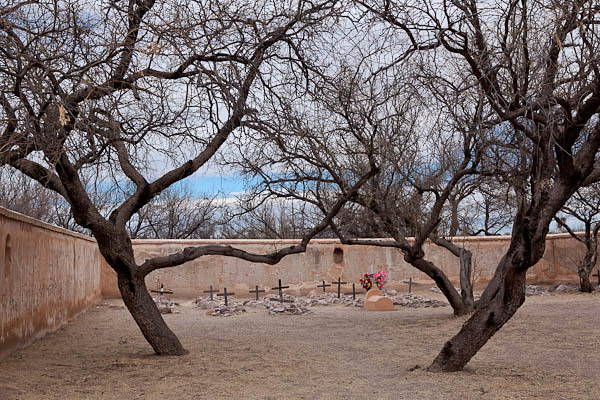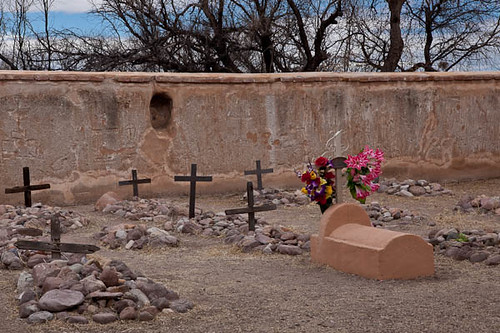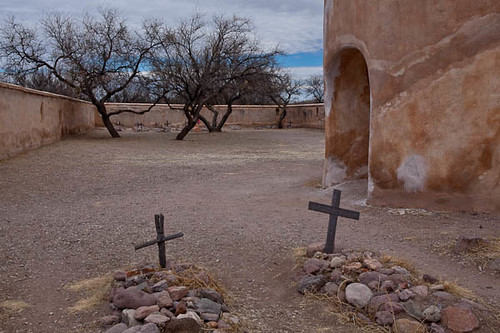Tramadol Online Best Price This is the larger section of the Tumacacori Cemetery. There are a dozen early 20th century graves that are marked with piles of heavy rocks and rustic, wooden crosses. Any evidence of mission era graves are no longer visible, most likely destroyed by weather and human activity in the area. In the late 1800s, the mission was used as a corral during cattle drives. But by 1900, the people moving into the area recognized this as “sacred ground” or “campo santa” and petitioned to once again use the cemetery to bury their dead.
The grave of one year-old Juanita T. Alegria (1915-1916) was the last person to be buried in the cemetery of the Tumacácori mission. Her grave, marked by the above ground adobe tomb, is the only one to be identified in the back section. According to the Park Ranger, her family still comes to maintain the grave and decorate it with flowers.
The cemetery and Mortuary Chapel are located at the rear of the church. The Chapel is about 16 feet in diameter and has a flat roof, though there were indications that is was originally intended to have a white dome similar to the dome on the church. This is where funeral masses were celebrated and rosaries were prayed for the dead.
One of the main reasons fro the outside chapel was the concern for the spread of illness. Many died from contracting Old World illnesses, usually small pox or measles, and to gather people in an enclosed area such as the larger church would have run the rick of more contagion. At the height of the mission, there were often one or two deaths every day.
This is the last entry for Tumacacori, although the entire series of photographs of Tumacacori National Historic Park are available in a Flickr set.
———————————
Bo Mackison is a photographer and owner of Seeded Earth Studio LLC. She is living in Tucson for two months, exhibiting her photography in art shows, taking photographs of Arizona landmarks, both historical and natural, and blogging about photography, art fairs, and living life “solo”. It is an experience well worth the effort.










Old graveyards can be very touching, especially when I read the inscriptions on the headstones. I spent many hors in the cemetery at Fort Huachuca south of Tucson, and visited the old graveyards in some of the old mining towns in the area as well. It does make you feel the history of the places.
Fort Huachuca is a place I hope to visit, and the mining towns, some now ghost towns, too. That’s a great idea to visit the cemeteries. Thank you, Montucky.
I loved this series of photos. The hot link above showing more of your work is great.
Thanks, Gandalf. There will probably be more in that set on Flickr before I travel east again. Tumacacori is a place that really draws me in, I ‘ll be visiting it a few more times.
Are all of the graves, apart from that of Juanita T. Alegria unmarked? They are such humble markings, yet show that a significant life once lived, and they were buried in this place. Sad, but interesting.
The child’s was the only grave identified in this small cemetery, but all these graves are from the early 1900s. There are records of the people who were buried when the mission was functioning — some 600 — but the whereabouts of those graves in unknown.
What beautiful simplicity. Both so poignant..and powerful. Terrific!
It was a very powerful place. Almost like being near another dimension…
Absolutely fascinating, riveting story and beautiful photos, Bo.